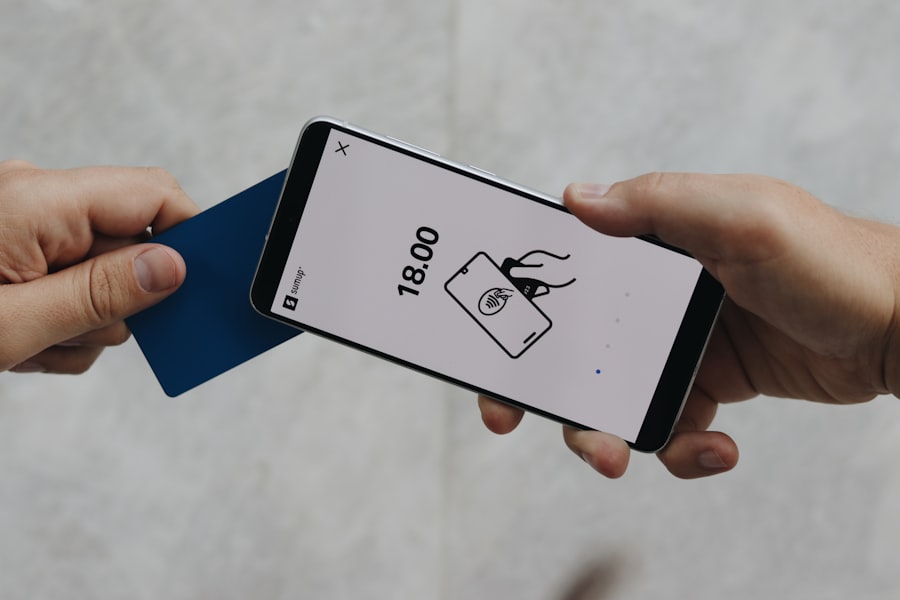Near Field Communication (NFC) technology is a short-range wireless communication protocol that enables the exchange of data between devices over a distance of just a few centimeters. This technology operates on the principles of electromagnetic induction, allowing devices equipped with NFC chips to communicate when they are in close proximity. NFC is an extension of existing contactless smart card technology and is widely used in various applications, including mobile payments, ticketing, and data sharing.
The convenience and speed of NFC transactions have made it a popular choice for consumers and businesses alike. NFC technology is built on standards established by the International Organization for Standardization (ISO) and the International Electrotechnical Commission (IEC). It operates at a frequency of 13.56 MHz and can transfer data at speeds ranging from 106 kbit/s to 424 kbit/s.
The technology supports three modes of operation: reader/writer mode, peer-to-peer mode, and card emulation mode. In reader/writer mode, an NFC-enabled device can read data from NFC tags or cards. Peer-to-peer mode allows two NFC devices to exchange information, while card emulation mode enables a device to act like a contactless smart card, facilitating transactions without the need for physical cards.
Key Takeaways
- NFC technology allows for contactless communication between devices within close proximity
- NFC technology works through electromagnetic radio fields and requires compatible devices
- NFC technology in payments allows for quick and convenient transactions with a simple tap
- Security and privacy concerns with NFC payments include potential for data interception and unauthorized transactions
- Advantages of using NFC technology in payments include speed, convenience, and reduced need for physical cards or cash
How Does NFC Technology Work?
NFC technology relies on a combination of hardware and software components to facilitate communication between devices. At its core, NFC consists of an NFC chip, an antenna, and a controller. The NFC chip is responsible for processing the data, while the antenna enables wireless communication.
When two NFC-enabled devices come into close proximity, they establish a connection through electromagnetic fields generated by their antennas. This connection allows for the transfer of data packets between the devices. The communication process begins when one device initiates a connection by sending a signal to the other device.
The receiving device then responds, and a secure channel is established for data exchange. This process occurs almost instantaneously, typically within milliseconds. The short range of NFC technology enhances security, as it requires physical proximity to initiate communication, reducing the risk of unauthorized access or interception.
Additionally, NFC can operate in passive or active modes; in passive mode, one device generates the field while the other device draws power from it to communicate.
NFC Technology in Payments

NFC technology has revolutionized the way consumers make payments, providing a seamless and efficient alternative to traditional payment methods. Mobile wallets such as Apple Pay, Google Pay, and Samsung Pay leverage NFC technology to enable users to make contactless payments using their smartphones or smartwatches. When a user wants to make a payment, they simply hold their device near an NFC-enabled point-of-sale terminal, and the transaction is completed within seconds.
The integration of NFC technology into payment systems has led to increased convenience for consumers. Users no longer need to carry physical credit or debit cards; instead, they can store multiple payment options on their mobile devices. This not only simplifies the payment process but also enhances the overall shopping experience.
Retailers benefit from faster transaction times and reduced queues at checkout, which can lead to increased customer satisfaction and loyalty.
Security and Privacy Concerns with NFC Payments
While NFC technology offers numerous advantages in terms of convenience and efficiency, it also raises important security and privacy concerns that must be addressed. One of the primary risks associated with NFC payments is the potential for unauthorized access to sensitive information. Although NFC transactions require close proximity between devices, malicious actors could exploit vulnerabilities in the technology to intercept data during transmission.
To mitigate these risks, many NFC payment systems employ robust encryption protocols and tokenization techniques. Encryption ensures that sensitive data is scrambled during transmission, making it unreadable to unauthorized parties. Tokenization replaces sensitive information with unique identifiers or tokens that can be used for transactions without exposing actual account details.
Additionally, many mobile wallets require biometric authentication or PIN codes before processing payments, adding an extra layer of security. Despite these measures, users must remain vigilant about their privacy when using NFC payments. For instance, if a device is lost or stolen, unauthorized individuals could potentially access stored payment information if proper security measures are not in place.
Users should also be cautious about connecting to unfamiliar NFC-enabled devices or terminals, as these could be set up to capture sensitive data.
Advantages of Using NFC Technology in Payments
The adoption of NFC technology in payment systems offers several compelling advantages for both consumers and merchants. One of the most significant benefits is the speed of transactions. With just a tap of a smartphone or smartwatch against an NFC terminal, payments can be processed almost instantaneously.
This rapid transaction time not only enhances customer satisfaction but also improves operational efficiency for retailers by reducing wait times at checkout. Another advantage of NFC payments is their versatility. Consumers can store multiple payment methods on their mobile devices, allowing them to choose from various credit cards, loyalty programs, or even cryptocurrency wallets without needing to carry physical cards.
This flexibility caters to diverse consumer preferences and encourages more frequent use of contactless payment options. Furthermore, many mobile wallets offer additional features such as transaction history tracking and budgeting tools, empowering users to manage their finances more effectively.
Limitations of NFC Technology in Payments

Despite its many advantages, NFC technology in payments is not without limitations that can hinder its widespread adoption. One notable challenge is the requirement for compatible hardware. Both the consumer’s device and the merchant’s point-of-sale terminal must support NFC technology for transactions to occur.
While many retailers have upgraded their systems to accommodate contactless payments, there are still numerous establishments that rely on traditional payment methods. Another limitation is the dependency on mobile devices and battery life. Users must have their smartphones or smartwatches charged and ready for use; otherwise, they may find themselves unable to complete transactions when needed.
Additionally, some consumers may be hesitant to adopt mobile payments due to concerns about technology reliability or unfamiliarity with digital wallets. This reluctance can slow down the transition from traditional payment methods to contactless solutions.
Future of NFC Technology in Payments
The future of NFC technology in payments appears promising as advancements continue to shape its evolution. As more consumers embrace mobile wallets and contactless payment options, businesses are likely to invest further in upgrading their infrastructure to support these technologies. The integration of artificial intelligence (AI) and machine learning into payment systems could enhance fraud detection capabilities and improve user experiences by offering personalized recommendations based on spending habits.
Moreover, as the Internet of Things (IoT) expands, we may see an increase in interconnected devices that utilize NFC technology for seamless transactions across various platforms. For instance, smart appliances could enable users to make purchases directly from their kitchen without needing a separate device. Additionally, advancements in security protocols will likely address existing vulnerabilities and enhance consumer confidence in using NFC payments.
How to Use NFC Technology for Payments
Using NFC technology for payments is a straightforward process that requires minimal effort from users once they have set up their mobile wallet or payment application. To begin with, users need to ensure that their smartphone or smartwatch is equipped with NFC capabilities and that they have downloaded a compatible mobile wallet application such as Apple Pay or Google Pay. Once the application is installed, users must link their preferred payment methods by entering their credit or debit card information securely within the app.
Many mobile wallets also allow users to add loyalty cards or coupons for additional savings during transactions. After setting up their accounts, users can make payments by simply unlocking their devices and holding them near an NFC-enabled terminal at checkout. During this process, users may be prompted to authenticate the transaction using biometric verification such as fingerprint scanning or facial recognition, or by entering a PIN code for added security.
Once authenticated, the payment is processed almost instantly, providing users with a digital receipt for their records. This seamless experience exemplifies how NFC technology has transformed traditional payment methods into a more efficient and user-friendly solution for consumers worldwide.
If you’re interested in learning more about how technology is revolutionizing business operations beyond NFC payments, you might find the article on the best software for project management insightful. It explores various software solutions that can enhance project efficiency, which is crucial for businesses looking to streamline their processes and improve productivity. You can read more about it by visiting Best Software for Project Management. This could provide valuable context on how different technologies, including NFC, are being integrated into everyday business practices.
FAQs
What is NFC technology?
NFC stands for Near Field Communication, which is a short-range wireless communication technology that allows devices to communicate with each other when they are in close proximity, typically within a few centimeters.
How is NFC technology used in payments?
NFC technology is used in contactless payments, where a consumer can simply tap their NFC-enabled card or smartphone on a payment terminal to complete a transaction. This allows for quick and convenient payments without the need for physical contact or swiping a card.
What are the benefits of using NFC technology in payments?
Some benefits of using NFC technology in payments include faster transaction times, increased convenience for consumers, and enhanced security features such as tokenization and encryption to protect sensitive payment information.
What types of devices support NFC technology?
Many modern smartphones, tablets, and wearable devices are equipped with NFC technology. Additionally, NFC-enabled payment cards and terminals are becoming more common in the retail and banking industries.
Is NFC technology secure for payments?
NFC technology is considered secure for payments due to features such as tokenization, which replaces sensitive card information with a unique token, and encryption, which protects data during transmission. However, it is important for consumers to follow best practices for securing their devices and payment information.

